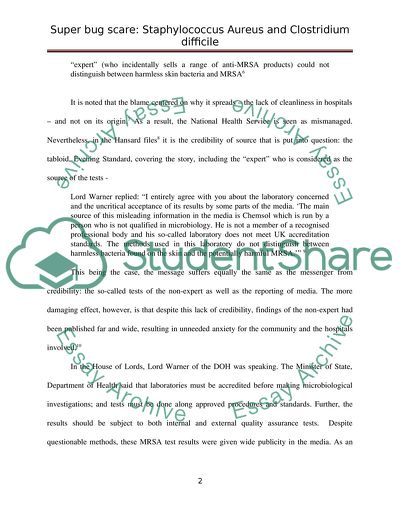Cite this document
(“The curse of the super bug, have journalists created a scare story or Essay”, n.d.)
The curse of the super bug, have journalists created a scare story or Essay. Retrieved from https://studentshare.org/miscellaneous/1545256-the-curse-of-the-super-bug-have-journalists-created-a-scare-story-or-is-there-a-special-difficulty-in-preventing-infections-by-staphylococcus-aureus-and-clostr
The curse of the super bug, have journalists created a scare story or Essay. Retrieved from https://studentshare.org/miscellaneous/1545256-the-curse-of-the-super-bug-have-journalists-created-a-scare-story-or-is-there-a-special-difficulty-in-preventing-infections-by-staphylococcus-aureus-and-clostr
(The Curse of the Super Bug, Have Journalists Created a Scare Story or Essay)
The Curse of the Super Bug, Have Journalists Created a Scare Story or Essay. https://studentshare.org/miscellaneous/1545256-the-curse-of-the-super-bug-have-journalists-created-a-scare-story-or-is-there-a-special-difficulty-in-preventing-infections-by-staphylococcus-aureus-and-clostr.
The Curse of the Super Bug, Have Journalists Created a Scare Story or Essay. https://studentshare.org/miscellaneous/1545256-the-curse-of-the-super-bug-have-journalists-created-a-scare-story-or-is-there-a-special-difficulty-in-preventing-infections-by-staphylococcus-aureus-and-clostr.
“The Curse of the Super Bug, Have Journalists Created a Scare Story or Essay”, n.d. https://studentshare.org/miscellaneous/1545256-the-curse-of-the-super-bug-have-journalists-created-a-scare-story-or-is-there-a-special-difficulty-in-preventing-infections-by-staphylococcus-aureus-and-clostr.


